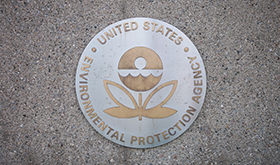National Academy Report Recommends Changes to EPA’s Affordability Assessment Procedures
 (November 14, 2017) - Echoing NACWA’s advocacy on affordability issues over the past decade, a new report from the National Academy of Public Administration (NAPA) recommends major changes to EPA’s procedure for evaluating ratepayer affordability and utility financial capability.
(November 14, 2017) - Echoing NACWA’s advocacy on affordability issues over the past decade, a new report from the National Academy of Public Administration (NAPA) recommends major changes to EPA’s procedure for evaluating ratepayer affordability and utility financial capability.
The report outlines 21 recommendations that “acknowledge the stakeholder identified deficiencies in the [EPA 1997 Financial Capability Assessment Guidance]…and propose improvements” to both the residential indicator and the financial capability components of EPA’s current process, among other things. The report stresses, however, that EPA also needs an “effective and equitable starting point for all permittees.” Instead of recommending a wholesale revision to EPA’s current procedures, NAPA makes suggestions for improving the assessment process and a number of related areas, including integrated planning.
The Senate Appropriations Committee, in a report on Fiscal Year (FY) 2016 legislation, directed EPA to enter into a contract with NAPA to “conduct an independent study to create a definition and framework for community affordability.” NACWA and its members provided extensive input during the interview process and participated in several meetings and roundtables for this purpose. The first five recommendations focus on the heart of the affordability issue and address many of NACWA’s top concerns:
- EPA should improve the metrics used for the residential and financial capability indicator components of the existing guidance. NAPA includes a list of criteria that these metrics should meet. NAPA believes an improvement to the current approach will meet EPA’s needs for a common starting point for all permittees, but also allow for the consideration of supplemental information
- The residential indicator, a measure of the affordability for ratepayers, should include all water costs—EPA does not currently allow drinking water costs to be included—and should focus on low-income users most vulnerable to rate increases, rather than median household income.
- The financial capability indicator should be revised to:
- Focus on operational efficiency, debt burden, and managerial effectiveness; and
- Expand the socioeconomic components affecting the utility’s market condition.
- The EPA should consider using the improved assessment framework in all its water-related regulatory decisions consistent with current statutory requirements.
- The EPA should improve its two-way communication strategy with its regions, state regulators, and other stakeholders. NAPA specifically highlighted one of NACWA’s top concerns that direction from EPA Headquarters was not being consistently implemented by the regions.
Recommendations 6-10 focus on improving the use of integrated planning, including additional guidance and online resources (e.g., case studies), more technical assistance, and an interesting recommendation that EPA require each integrated plan provide established criteria and a formalized agreement between the community and the appropriate government entity to guide implementation. NACWA will be reviewing this recommendation closely to determine whether it might constrict, rather than support, broader use of integrated planning.
Recommendations 11-15 focus on several stormwater-related issues, including new business models, stormwater fees and innovative practices like green infrastructure. Recommendations 16-20 focus on stretching limited federal resources, including via innovative leveraging of WIFIA to expand SRF lending activities, and working with state and local governments to eliminate barriers to more efficient and effective rate structures. Recommendation 21 specifically suggests that EPA consider the development and use of performance standards in the integrated planning context, to focus on outcomes rather than design or process.
In addition to the recommendations, the report also includes some principal findings, such as how the fragmented governance of the water industry – including the siloed nature of managing wastewater, drinking water and stormwater separately – is a contributing factor to the nation’s formidable challenges.
NACWA plans to meet with EPA soon to discuss whether and how it will act to address the NAPA report. Members with any questions or comments on the report can contact Chris Hornback, NACWA’s Chief Technical Officer.